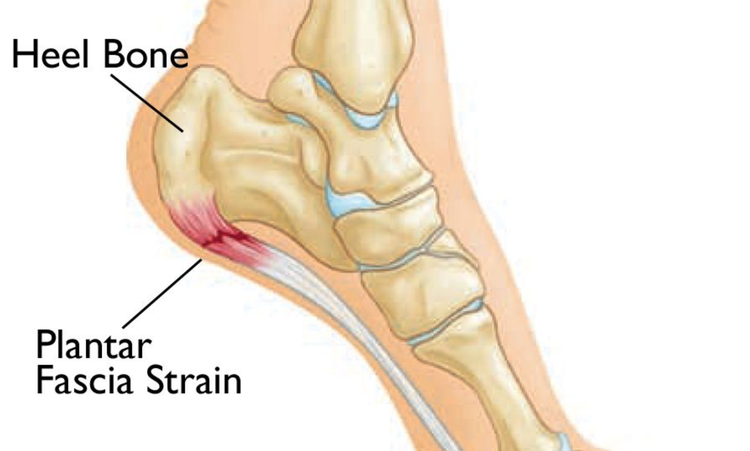Plantar Fasciopathy Oct 19 2020

The plantar fascia is a thick band of connective tissue that runs from the base of the heel to the underside of the toes. It helps create tension in the foot and assists with walking and running by creating a spring mechanism to help propel the foot forwards with each step we take.
The plantar fascia can become irritated or painful if the load placed upon it exceeds what the plantar fascia is able to tolerate, leading to plantar fascioapthy. People with plantar fasciopathy normally experience pain on the inside of the heel or foot.
In younger people with a sudden onset of plantar fascia pain, there is likely to be some inflammation around the plantar fascia due to a sudden change in load. For example, if you take up running and increase the distance too quickly this can irritate the plantar fascia and cause localised inflammation. If however, you have experienced plantar fascia pain for a number of months or years, you are more likely to have secondary age- related changes of the plantar fascia which makes it less pliable and potentially less able to tolerate load.
You are more likely to develop plantar fascia pain if you are overweight, train on hard surfaces or wear poorly supportive shoes. People that have flexible feet or flattened arches in their feet tend to be more prone to plantar fascia pain as they are more likely to experience excessive pronation (a rolling inwards movement) of foot and ankle when walking or running, thus placing additional stress through the plantar fascia.
The most effective way to treat plantar fasciopathy is with a progressive loading programme. This involves completing exercises to gradually load the plantar fascia, making it more tolerant of load over time and therefore less likely to cause you pain when walking, running or playing sport.
Reducing your weight (if you’re overweight), trying to vary the terrain in which you train on and ensuring that you have supportive shoes that are suitable for purpose will also help. Trainers and shoes with arch supports and laces, as well as rubber soles for shock absorption are best.
Keeping your leg and core muscles strong, particularly your calves, hamstrings and gluteal muscles is essential to ensure efficient loading of the plantar fascia and to prevent additional shearing forces through the foot. Runners and sports people that do not engage in additional strength and conditioning for their sport are more likely to experience plantar fascioapathy and other overload injuries.
If you are experiencing foot or heel pain or would like to know more about preventing plantar fasciopathy and other overload injuries speak to one of our specialist physiotherapists.
Leanne O'Brien
Specialist MSK Physiotherapist
Executive Physiotherapy
Share this post: